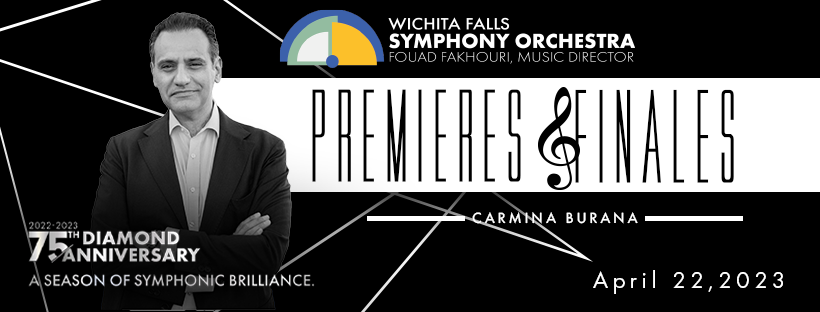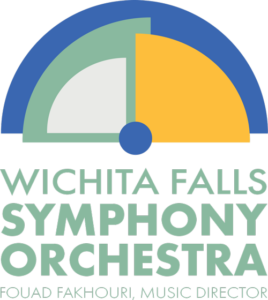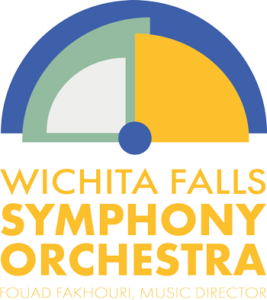Program Notes – April 22, 2023
Written by Todd Giles
Dai Wei: The Dancing Moonlight (2017)
Recently featured in The Washington Post’s “‘22 for 22’: Composers and Performers to Watch this Year,” Chinese-born Dai Wei is currently working on her doctorate in Music Composition at Princeton University. To date, Wei has written music for orchestra, chamber ensemble, voice, solo instrument, and electronics, much of which explores themes such as time, consciousness and perception. Titles such as The Lotus Told Me, Samsāric Dance, and World in a Grain of Sand speak to the spiritual and philosophical undergirding of her artistic vision. Hers is an intersectional aesthetic engaged in culture, race and the malleability of generic expectations.
The Dancing Moonlight is a brief, energetic work composed for the Chinese New Year in 2017 which brings together the sounds and rhythms of jazz, rock and classical music. According to Wei, “it was largely about my infatuation with a type of traditional dance music that originated from an ethnic group called Yi in Yunnan, China. I wanted this piece to carry a celebratory and energetic vibe while one is being nostalgic at the same time.” As she says, “we are always looking at the same moon regardless of where we are.” Wei’s music, like the moon above, crosses borders, shedding light on the gaps of difference as well as the bridges of connectivity, and, as all progressive art must, moves us forward in its glow.
Fouad Fakhouri: Trance (2023)
When I was asked to write a new piece in honor of the 75th Anniversary of the Wichita Falls Symphony Orchestra (WFSO), I jumped at the opportunity to create a work that commemorates such a special occasion. Immediately, I had a number of ideas, ranging from a large multi-movement suite to a significant full-length symphony; however, over a few months and after a number of different sketches I finally decided on writing a single movement work that captured the joy, energy and excitement of this memorable and joyous occasion.
Since my teens, in the early nineties, I have been in love with EDM (Electronic Dance Music) specifically “Techno” and “Trance” music. Those two genres use hypnotic rhythms and synthesized effects to create fast paced, repetitive and hard driving music that builds intensity, tension and energy over the span of an entire track.
In my late teens and early twenties, during the summer holidays, I, along with friends, would go to nightclubs that played trance music. We’d stay there till dawn, get home in the early hours of the morning, sleep for a few hours, and then head to the beach for the entire day, returning in the early evening in time to go out again and repeat the previous evening’s experiences. Those carefree days were some of the happiest and most joyful times during my early adult life. In Trance I wanted to recreate and capture that sense of joy, fun, youthful energy and passion for life. All attributes that to me seemed to fit naturally with this special and happy occasion of celebrating the WFSO’s 75th Anniversary season.
Trance is loosely constructed around four different sections. The introduction consists of a bold and heroic opening that transitions into a percussive theme which then naturally leads into the second slower, more tranquil, section where eight woodwind players double on Ocarinas (An Ocarina is an ancient instrument, a type of vessel flute, with roots that go back over 12,000 years). This slow episode is abruptly interrupted by the third section, which recreates the idea of Trance music’s “beat drop” (a beat drop is the part of the dance track where a repetitive motif gradually, and over an extended period, builds up in intensity and volume leading to the entrance of the percussion). This driving section is lead by a tambourine and an incessant bass drum. Finally the fourth and final part of the work starts softly with marimbas and again builds to bold ascending gestures performed by the upper brass accompanied by loud rhythmic accents played by the strings and woodwinds.
– Fouad Fakhouri
Carl Orff: Carmina Burana (1936)
If one were predestined to be a proverbial one-hit-wonder, they couldn’t do better than emulate Munich-born Carl Orff (1895–1982). Were it not for his rousingly popular Carmina Burana (1936), Orff would be better known today as one of the early 20th century’s leading authorities on children’s music education than as the composer of one of the most recognizable works in the classical canon. As with other highly recognizable works that have made their way into the public zeitgeist such as Ravel’s Boléro, Strauss’s Also sprach Zarathustra, and Wagner’s Flight of the Valkyries, selections from Carmina Burana have likewise appeared in numerous movies, television shows and commercials, including Excalibur and The Simpsons.
While Carmina Burana might sound like medieval music, Orff was a turn-of-the-century contemporary of modernist composers such as Francis Poulenc, George Gershwin, and Arthur Honegger, the latter two of whom wrote works mimicking the sounds of car horns and trains. Like Prokofiev, who was just four years his senior, Orff too was interested in tapping into something less modern and mechanistic in exchange for something more primal and ritualistic. He accomplished this with Carmina Burana by setting 13th century secular poetry to a Baroque era form.
The cantata, from the Italian cantare (“to sing”), emerged during the early Baroque era in Italy as a secular form of music which provided composers and performers with operatic-style writing on a small scale for one or two singers and continuo. In the hands of J. S. Bach in Germany, who synthesized the Italian solo cantata style with the German chorale tradition, the cantata thrived as a form of church music that included operatic elements such as arias, choruses and recitative, which the Italians were also incorporating in the seventeenth century.
Carmina Burana is the first part of a trilogy titled The Triumphs, which highlights Orff’s interest in medieval German poetry. The text of Carmina Burana is based on twenty-four secular poems written by itinerant monks and scholars knows as Goliards, which were taken from a Latin manuscript found in 1803 at the Benedictine monastery of Benediktbeuern. The cantata’s full title is Songs of Beuern: Secular songs for singers and choruses to be sung together with instruments and magical images.
The poems chosen from the Codex latinus monacensis explore perennial, if not somewhat sophomoric, themes such as drunkenness, lust, the cruel indifference of fate, and the gluttonous and greedy foibles of church officials. The cantata is comprised of twenty-five movements divided into five major sections, with titles such as “In the Meadow,” “In the Tavern,” and “Court of Love.” Much of the structure of the individual movements is influenced by the drawing of the Wheel of Fortune adorning the first page of the original text. For example, the content of movements might turn on the wheel from, say, love to loss or hope to despair. Such is life. As the script running around the Wheel says, “I shall reign, I reign, I have reigned, I am without a realm.” The Fortuna Wheel goes round and round.
The opening movement, titled “O Fortuna,” is one of the most well-known pieces of music ever written. This isn’t melodically and harmonically complex music; it’s percussive, elemental, primitive. It’s ceremonial. Incantatory. Ritualistic. It sounds like something before time. The irony, of course, is that many of the poems in this iconic work are mocking, bawdy and sensuous. Carmina Burana is also a massive and lengthy work calling for two choirs—one large and one small—one boys’ choir, and baritone, tenor and soprano soloists, as well as woodwinds, brass, strings, keyboards and an abundance of percussion.




